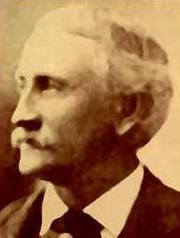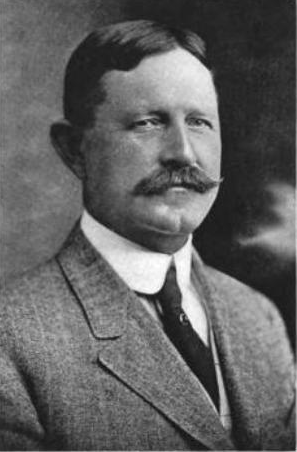
The naval Battle of the Eastern Solomons took place on 24–25 August 1942 and was the third carrier battle of the Pacific campaign of World War II and the second major engagement fought between the United States Navy and the Imperial Japanese Navy (IJN) during the Guadalcanal campaign. As at the Battle of the Coral Sea and the Battle of Midway, the ships of the two adversaries were never within sight of each other. Instead, all attacks were carried out by carrier-based or land-based aircraft.

The Naval Battle of Guadalcanal, sometimes referred to as the Third and Fourth Battles of Savo Island, the Battle of the Solomons, the Battle of Friday the 13th, or, in Japanese sources, the Third Battle of the Solomon Sea, took place from 12 to 15 November 1942 and was the decisive engagement in a series of naval battles between Allied and Imperial Japanese forces during the months-long Guadalcanal campaign in the Solomon Islands during World War II. The action consisted of combined air and sea engagements over four days, most near Guadalcanal and all related to a Japanese effort to reinforce land forces on the island. The only two U.S. Navy admirals to be killed in a surface engagement in the war were lost in this battle.

Early on a Sunday morning, October 23, 1983, two truck bombs struck buildings in Beirut, Lebanon, housing American and French service members of the Multinational Force in Lebanon (MNF), a military peacekeeping operation during the Lebanese Civil War. The attack killed 307 people: 241 U.S. and 58 French military personnel, six civilians, and two attackers.

The Battle of the Santa Cruz Islands, fought during 25–27 October 1942, sometimes referred to as the Battle of Santa Cruz or Third Battle of Solomon Sea, in Japan as the Battle of the South Pacific, was the fourth aircraft carrier battle of the Pacific campaign of World War II. It was also the fourth major naval engagement fought between the United States Navy and the Imperial Japanese Navy during the lengthy and strategically important Guadalcanal campaign. As in the battles of the Coral Sea, Midway, and the Eastern Solomons, the ships of the two adversaries were rarely in sight or gun range of each other. Instead, almost all attacks by both sides were mounted by carrier- or land-based aircraft.
Eric M. Hammel was a military historian, with a focus on the military campaigns of the United States Marine Corps in the Pacific War, and other military action in World War II as well as military conflicts including the Vietnam War and the Arab-Israeli Conflict. Hammel wrote a series of books about World War II Flying Aces but his most influential book was The Root : The Marines in Beirut, August 1982-February 1984 on the subject of the 1983 Beirut barracks bombings.

Jason Aaron Hammel is an American former professional baseball pitcher. He played in Major League Baseball (MLB) for the Tampa Bay Devil Rays/Rays, Colorado Rockies, Baltimore Orioles, Oakland Athletics, Chicago Cubs, and Kansas City Royals.

Inazuma was the twenty-fourth Fubuki-class destroyers, or the fourth of the Akatsuki class, built for the Imperial Japanese Navy in the inter-war period. When introduced into service, these ships were the most powerful destroyers in the world. They remained formidable weapons systems well into the Pacific War.

Caston is a village and civil parish in the English of Norfolk.

Drienčany is a village and municipality in the Rimavská Sobota District of the Banská Bystrica Region of southern Slovakia.

George Edwin Gard is one of only two men to have served as both police chief in Los Angeles, California, and sheriff of Los Angeles County, the other being William A. Hammel. He was the city's fourth chief, succeeding Henry King, and the county's 16th sheriff (1884–1886), succeeding Alvan T. Currier.

Astwood Bank is a district within Redditch. Astwood Bank is near the Warwickshire - Worcestershire border, near villages such as Studley, Sambourne, Callow Hill, Feckenham, and Cookhill.

Hammels is an area within Rockaway Beach on the Rockaway Peninsula in the New York City borough of Queens. It is located west of Arverne and east of Seaside, and is centered on Beach 84th Street. Its main thoroughfare is Beach Channel Drive. The New York City Subway's A train travels through the neighborhood on the IND Rockaway Line. The Hammel Houses, a public housing project built in 1954, is located in the neighborhood.

P was a streetcar line in Los Angeles, California. It was operated by the Los Angeles Railway from 1895 to 1958, and by the Los Angeles Metropolitan Transit Authority from 1958 to 1963.
Hammels was a Long Island Rail Road station on the Rockaway Beach Branch in Hammels, Queens. It was located at what is today Beach 84th Street at the west leg of the Hammels Wye.

Gammel Køgegård is a manor house located just west of Køge, Denmark.

William George Kerckhoff (1856–1929) was an American businessman.

Heizer, also called Heizerton, is an unincorporated community in Barton County, Kansas, United States.

Frijsenborg is a manor house and estate near Hammel, 27 km (17 mi) northwest of Aarhus in Jutland, Denmark. The first manor on the site known as Jernit was built by Valdemar Parberg in 1583. After the statesman Mogens Friis acquired the property in 1672, the manor was rebuilt at the end of the 17th century. In the 1860s, it was considerably expanded and redesigned in the Renaissance style.
Leopold Hammel was an American lawyer and Democratic politician. He was a prominent lawyer in Milwaukee for nearly 40 years and served as district attorney of Milwaukee County (1893–1895). Earlier in his career, he represented Outagamie County in the Wisconsin State Assembly for four years (1885–1889).

V&SAR Intercolonial Express Carriages were carriages on a new train called the Intercolonial Express running on Victorian Railways and South Australian Railways in 1887. The track of two railways met on Wednesday 19 January 1887. The Victorian Railways' Western Line to Dimboola, and the South Australian Railways' Wolseley line, met at Serviceton. Since both sides shared the broad gauge of 5'3", an agreement was made between the two railways allowing a pool of carriages, classed O, to be specifically allocated to interstate trains linking the capitals of Melbourne and Adelaide. The operating and maintenance cost of the new train would be funded by both railways, approximately 60% paid for by the Victorian Railways and 40% by the South Australian Railways.

















